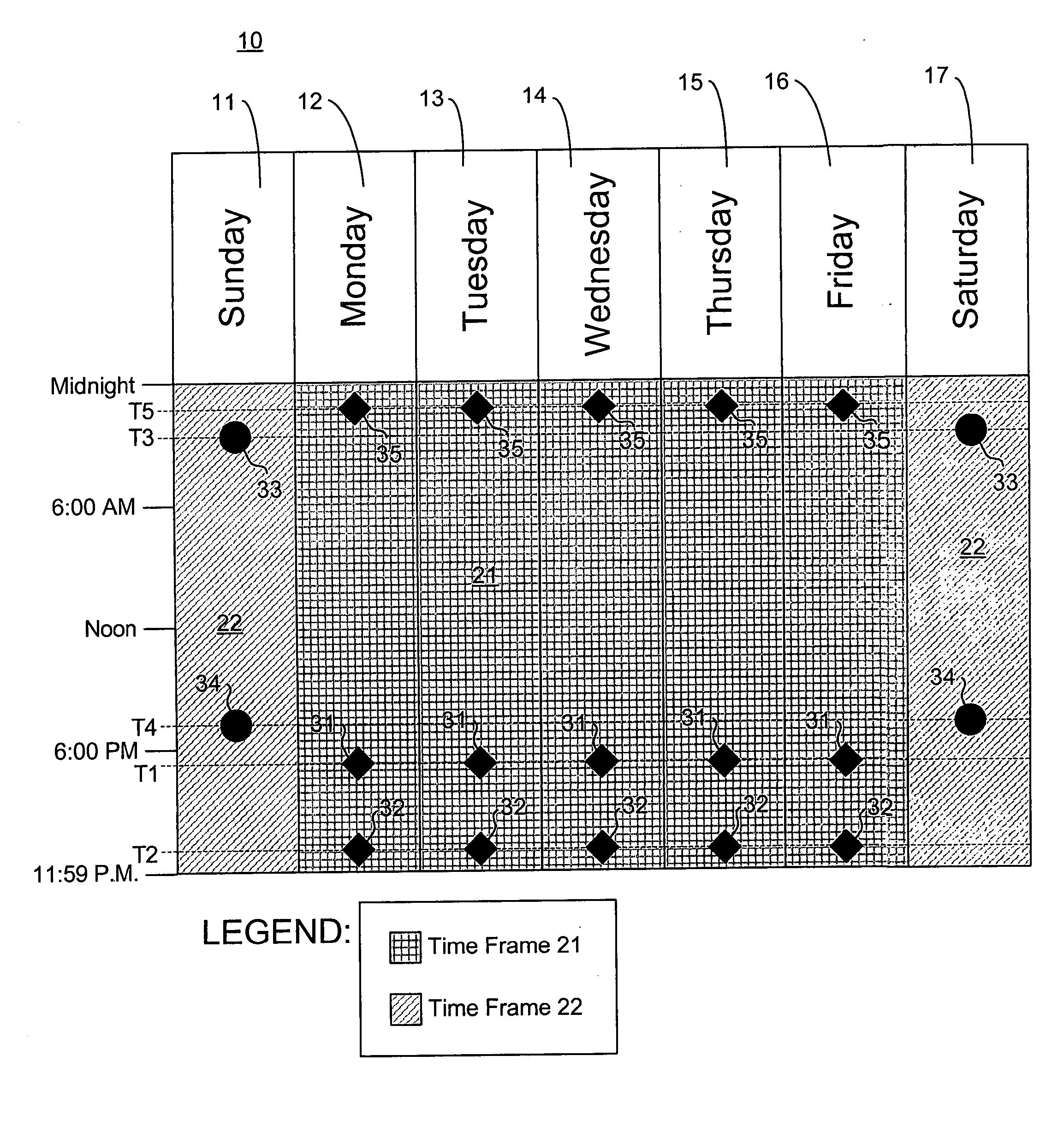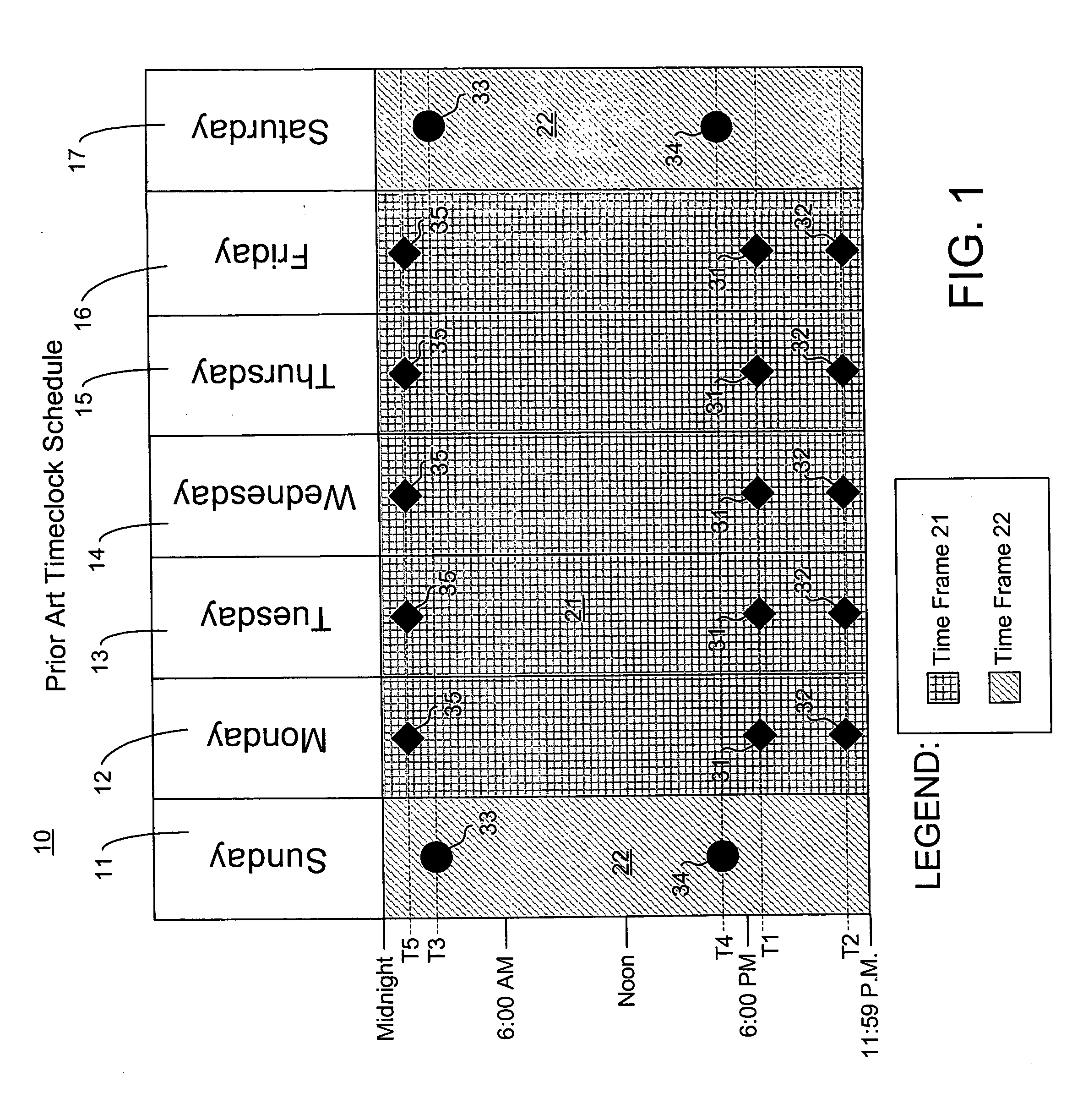Timed control system with shifted time features
a control system and time feature technology, applied in the field of time-clocking or calendar-based control systems, can solve the problems of unnecessary lighting being turned off, unsuitable additional lighting that a user would typically desire for friday and saturday evenings,
- Summary
- Abstract
- Description
- Claims
- Application Information
AI Technical Summary
Benefits of technology
Problems solved by technology
Method used
Image
Examples
first embodiment
[0030] In the invention, the time schedule 40 has two timeframes, the weekday timeframe 51 and the weekend timeframe 52. The beginning and ending times of the weekday timeframe 51 are fixed at noon on Sunday 11 and 11:59 A.M. on Friday 16, respectively. The beginning and ending times of the weekend timeframe 52 are fixed at noon on Friday 16 and 11:59 A.M. on Sunday 11, respectively. Please note that the beginning and ending times of each timeframe could be defined as noon and 11:59 A.M. respectively.
[0031] It should be apparent that timeframes 51,52 can be variable in duration, and begin and end at different times from each other. In addition, multiple timeframes are contemplated for control events under the scope of the present invention. For example, two or more timeframes may be defined to be practical for real world situations. Several persons in a given residential or commercial building may have different weekly schedules, for example, that are better served by the control sy...
second embodiment
[0032] In the invention, the time schedule 40 has two or more timeframes and the beginning and ending times of each timeframe are determined by a user input. Such a user input can be provided through standard programming means for the time schedule, such as the user interface of a master control or GUI software as previously discussed
[0033] The invention provides greater flexibility in obtaining desired lighting controls, without unexpected or inappropriate results. Lighting events according to conventional weekday and weekend definitions are shifted to more appropriate timeframes according to the timeframe redefinition provided in the present invention. The present invention provides the advantages of obtaining greater efficiency with a simpler control, and saves complexity, cost and energy usage.
PUM
 Login to View More
Login to View More Abstract
Description
Claims
Application Information
 Login to View More
Login to View More - R&D
- Intellectual Property
- Life Sciences
- Materials
- Tech Scout
- Unparalleled Data Quality
- Higher Quality Content
- 60% Fewer Hallucinations
Browse by: Latest US Patents, China's latest patents, Technical Efficacy Thesaurus, Application Domain, Technology Topic, Popular Technical Reports.
© 2025 PatSnap. All rights reserved.Legal|Privacy policy|Modern Slavery Act Transparency Statement|Sitemap|About US| Contact US: help@patsnap.com



